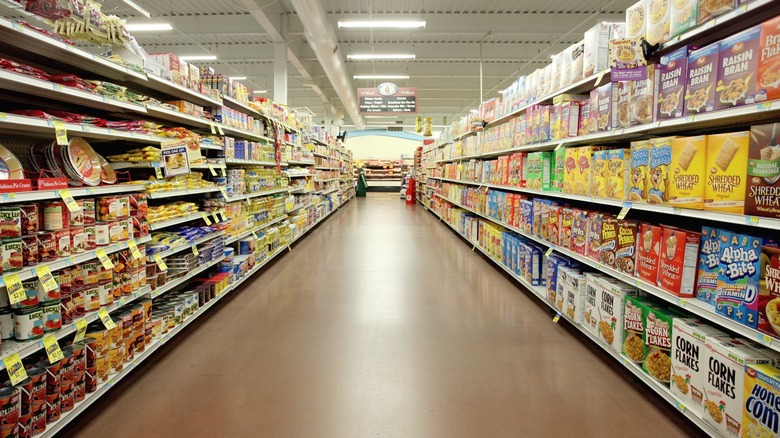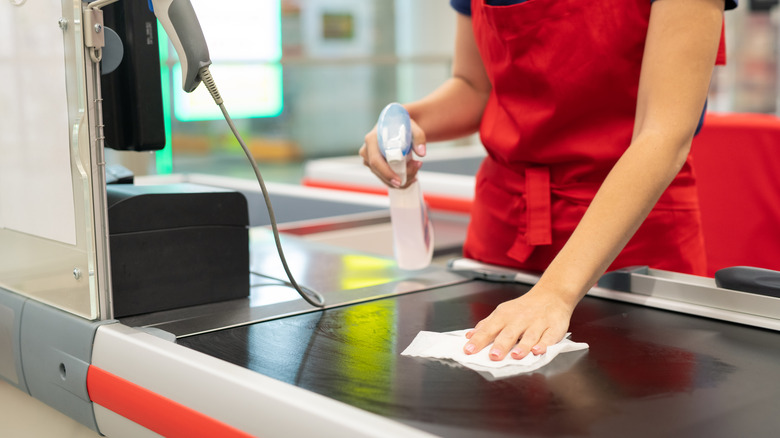Bad Grocery Stores Will Usually Have One Red Flag In Common
We all tend to have our go-to grocery stores, whether due to proximity, good deals or everyday prices, or even just the vibe. But every now and then, you might want or need to explore a new spot. When you do, there's one thing you should always be on the lookout for: cleanliness. Among the many grocery shopping mistakes people make, overlooking the state of a store's environment is one that can potentially lead to serious issues, including getting sick. Dirty shelves, sticky floors, and grimy aisles don't just make for an unpleasant shopping experience — they're a big ol' red flag that something might be off behind the scenes.
As you browse the aisles, be mindful of certain cleanliness concerns. It's understandable if the store gets a bit messy during peak hours, but what you really want to watch for are signs of persistent neglect that suggest larger issues. Look for food storage problems, spills in the dairy aisle, and leaks or messes in the meat section. Unpleasant odors or stains that have clearly been overlooked for a while — especially around perishable items — are all signs of deeper, ongoing problems that shouldn't be ignored. The overall condition of a store is often a reflection of how much effort is put into keeping both customers and products safe.
What cleanliness tells you
When you're walking through a grocery store, there are some sanitary issues that go beyond just a little untidiness. Obvious signs like dirt on the floors, old spills on surfaces, or a dysfunctional bathroom suggest a store isn't prioritizing health and safety. In particular, fresh food areas are crucial spots for cleanliness. If fruits and veggies look bad — not just a case of shopping at the grocery store by the time produce has been picked through, but consistently poor quality — it might mean the store isn't properly managing its inventory. Refrigerators and freezers that aren't cold enough or have broken doors are another major concern. These are all clues that the store might not have enough staff to keep things running smoothly, which can affect food safety.
A lack of cleanliness could also be a sign of deeper issues like pests or expired products, particularly when messes have been ignored. For example, if a store doesn't promptly deal with spills in its dairy aisle, often located in the back of the grocery store where problems might go unnoticed, it raises questions about the overall handling of food. Accordingly, the USDA encourages customers to report cleanliness or quality issues directly to store management, as these problems can pose serious health risks. If you continue visiting a store and notice that its problems aren't being addressed, it's a good idea to buy your groceries elsewhere.

